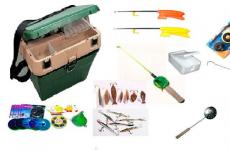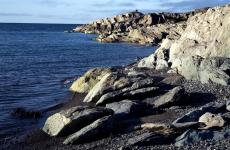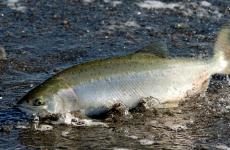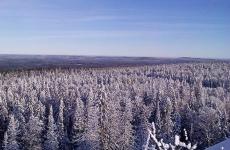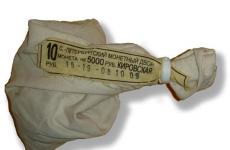Map of highways in the CBD indicating kilometers. Detailed map of Kabardino-Balkaria with settlements, villages and regions
Kabardino-Balkaria is a republic within the Russian Federation, located in the south of Russia. A satellite map of Kabardino-Balkaria shows that the region borders North Ossetia, Stavropol Krai, Karachay-Cherkessia and Georgia. The area of the republic is 12,470 square meters. km. Most of the region's territory is occupied by the North Caucasus mountains.
The region is divided into 10 municipal districts and 3 cities of republican subordination. The largest cities of Kabardino-Balkaria are Nalchik (the capital), Prokhladny, Baksan, Nartkala and Maisky.
The economy of Kabardino-Balkaria is based on agriculture, synthetic diamond production, electricity and logging. In recent years, 3 business incubators have been created in the republic for the development of small and medium-sized businesses.
Mount Elbrus in Kabardino-Balkaria
Brief history of Kabardino-Balkaria
In 1922, the Kabardino-Balkarian Autonomous Okrug was formed, which in 1936 was transformed into the Autonomous Soviet Socialist Republic. From 1942 to 1943 the region was occupied by German troops. In 1944, the republic was transformed into the Kabardian Autonomous Soviet Socialist Republic, but in 1957 it was returned to its old name - the Kabardino-Balkarian Autonomous Soviet Socialist Republic. In 1992, the Kabardino-Balkarian Republic was created.

Chegem waterfalls in winter
Sights of Kabardino-Balkaria
On a detailed satellite map of Kabardino-Balkaria you can see the main attraction of the republic - the highest mountain in Europe and Russia - Elbrus (5642 m). It is also worth seeing other mountains with a height of more than 5000 m: Koshtantau, Dykhtau, Mizhirgi, Pushkin Peak, Dzhangitau and Shkhara.
Fans of natural attractions are recommended to visit the Elbrus National Park, Blue Lakes, Kabardino-Balkarian High Mountain Reserve, Lake Tambukan, Djilu-Su mineral springs, Narzanov glade, hot springs in Aushiger, Terskol gorge and Chegem waterfalls.

Abayev Tower, Kabardino-Balkaria
Also in Kabardino-Balkaria it is worth seeing the Atazhukinsky fruit garden and the Orthodox Cathedral in Nalchik, the Dzhaboevs’ castle in the village of Bezengi and the Abaevs’ tower in the village of Konlyum.
→ Kabardino-Balkarian Republic
Detailed map of the Kabardino-Balkarian Republic
| Kabardino-Balkaria on the map of Russia. Detailed map of Kabardino-Balkaria with cities and villages. Satellite map of the Kabardino-Balkarian Republic with districts, villages, streets and house numbers. Study detailed maps from the satellite services "Yandex Maps" and "Google Maps" online. Find the desired address, street or house on the map of the Kabardino-Balkarian Republic. Zoom in or out on the map using mouse scroll or touchpad gestures. Switch between schematic and satellite maps of the Kabardino-Balkarian Republic. |
Map of the Kabardino-Balkarian Republic with cities and regions
| 1. | 4. () | 7. () | 10. () |
| 2. () | 5. () | 8. () | |
| 3. () | 6. () | 9. () |
Satellite map of Kabardino-Balkaria
Switching between the satellite map of Kabardino-Balkaria and the schematic map is done in the lower left corner of the interactive map.
Kabardino-Balkaria - Wikipedia:
Date of formation of Kabardino-Balkaria: January 5, 1936
Population of Kabardino-Balkaria: 862,050 people
Telephone code of Kabardino-Balkaria: 866
Area of Kabardino-Balkaria: 12,500 km²
Vehicle code of Kabardino-Balkaria: 07
Regions of Kabardino-Balkaria:
Baksansky, Zolsky, Leskensky, Maysky, Prokhladnensky, Tersky, Urvansky, Chegemsky, Chereksky, Elbrussky.
Cities of Kabardino-Balkaria - list of cities in alphabetical order:
Baksan city- City population: 36,860 people.
Maysky city- City population: 26,755 people.
Nalchik city- City population: 240,203 people.
Nartkala city- City population: 31,694 people.
Prokhladny city- City population: 59,601 people.
Terek city- City population: 19,170 people.
Tyrnyauz city- City population: 21,000 people.
Chegem city- City population: 18019 people.
Kabardino-Balkarian Republic– a region of Russia in the North Caucasus, the capital of which is the city Nalchik. The population of Kabardino-Balkaria is about 1 million people, which includes many nationalities. The nature of the North Caucasus has awarded the republic with a large number of natural attractions, especially national parks and reserves.
The largest nature reserves in this region are the Kabardino-Balkarian High Mountain Reserve and the Elbrus National Park. The latter got its name for a reason, because it is in this part of Russia that Mount Elbrus rises - a favorite place for skiers, climbers and snowboarders.
Sights of Kabardino-Balkaria: Elbrus, Chegem waterfalls, Baksan Gorge and the monument to the pioneers of Elbrus, Mountaineering and Hunting Museum named after Vladimir Vysotsky, Mount Cheget, Waterfall "Maiden's Braids", Valley of Narzanov, Cableway on Elbrus, Baksan River, Monument "Forever with Russia", Monument to Lermontov in Nalchik, National Museum of the Kabardino-Balkarian Republic, Nalchik Central Park, Baksan Gorge, Blue Lakes, Elbrus National Park, Cherek Gorge, Chegem Gorge, Terskol Ski Resort.
Five fundamental ridges of the Greater Caucasus pass through the territory of the republic:
- Wooded;
- Main (Vodorasdelny);
- Pasture (Cretaceous);
- Rocky;
- Side.
The highest mountain in Europe is located - Elbrus. The climate in the region is quite mild, but there is constant snow in the mountains.
- The wettest month is June;
- The warmest months are July and August, the temperature reaches + 40 degrees;
- The coldest month is January, the temperature drops to -30 degrees.
The satellite map of the Republic of Kabardino-Balkaria shows broad-leaved and coniferous forests, small rivers, and alpine meadows. In total, 12 rivers flow through the region, there are four lakes, and four large waterfalls. The flora and fauna of the republic is diverse. There, for example, you can meet brown bear, Caucasian chamois, Dagestan tur, pheasant, quail, roe deer and other animals and birds.
Transport of Kabardino-Balkaria
- The main highway is the European E50. It runs from Brest (France) to Makhachkala (Russia, Dagestan);
- Federal A158. Prokhladny - Baksan - Elbrus;
- Regional P288. Nalchik - Maisky;
- Regional P290. May - Cool;
- Regional R292. Maisky - Argudan;
- Federal highway P217 (“Caucasus”), connecting the village of Pavlovskaya (Krasnodar Territory) and the village of Yarag-Kazmalyar (Dagestan).
There are other regional highways in the republic. There is also an airport in Kabardino-Balkaria. It is located 5 kilometers from the center of Nalchik. The online map of the Republic of Kabardino-Balkaria with borders shows that a railway runs through the region. There is a large railway station in Nalchik.
Map of Kabardino-Balkaria with regions and settlements
On the map of the Republic of Kabardino-Balkaria with regions it is noted that in total there are three cities of republican significance in this region. These are Nalchik, Prokhladny and Baksan. The capital of the republic is Nalchik with a population of 270 thousand people. There are ten districts in the republic:
- Chereksky;
- Elbrus;
- Chegemsky;
- Urvansky;
- Prokhladnensky;
- Tersky;
- Leskensky;
- May;
- Baksansky;
- Zolsky.
About 870 thousand people live on the territory of the republic. More than 500 thousand are Kabardians, about 250 thousand are Russians, over 80 thousand are Balkars. People of other nationalities also live here.
The Kabardino-Balkarian Republic is one of the North Caucasian subjects of the Russian Federation, bordering the Stavropol Territory, Georgia, Karachay-Cherkessia, Ingushetia and North Ossetia. Three official languages are recognized here: Russian, Kabardian and Balkar. The largest settlements are Nalchik, Prokhladny, Baksan, Nartkala, Maisky, Tyrnyauz. The administrative division includes cities of republican subordination and districts. The region is a major transport center of the North Caucasus: successful interaction with other parts of Russia is ensured by road and rail connections, which account for the bulk of passenger and cargo transportation. The Caucasus Highway provides access not only to neighboring regions, but also abroad. International flights operate from the airport in Nalchik.
Maps of cities of Kabardino-Balkaria:
Map of Kabardino-Balkaria online
In Kabardino-Balkaria, more than a hundred ethnic groups coexist with each other, the most numerous of which are Kabardians, Russians, Balkars, Turks, and Ossetians. The basis of the economic stability of the republic is developed agriculture, widely represented by grain and industrial crops, as well as livestock. Industrial enterprises operating in the Kabardino-Balkarian Republic produce synthetic diamonds, cable products, gypsum materials, and the electric power complex (a network of existing and under construction hydroelectric power stations) is currently actively developing.
During any travel around the world, be it a business trip or a tourist voyage, a map is an indispensable assistant.
If you need to go to the mountains of the North Caucasus, then a satellite map of Kabardino-Balkaria will serve you well: it will not let you get lost in an unfamiliar area.
You can easily find any areas, cities, natural sites, attractions, tourist centers of the republic on the road map of Kabardino-Balkaria, where all the main objects are marked in detail.
Districts of Kabardino-Balkaria on the map
The republic is divided into several large districts, the administrative center is the city of Nalchik. In general, there are 15 settlements (cities) with a population exceeding 10 thousand people. These are (in addition to Nalchik):
- Chill;
- Nartkala;
- May;
- Terek
- and others.
Cities and large rural communities make good reference points for a road trip. Therefore, you will need a map of Kabardino-Balkaria with cities and villages.
Three cities in Kabardino-Balkaria are of republican subordination (we are talking about Nalchik, Baksan, Prokhladny). The most convenient and good roads lead to and from them.
Kabardino-Balkaria is mostly an agricultural republic; people here grow vegetables, fruits, and raise livestock. Therefore, there were many villages on its territory. This is easy to see if you take a map of Kabardino-Balkaria by region. Areas belonging to the plain territories are devoted to agricultural products.
Cattle graze in the foothills:
- rams;
- sheep
Agricultural areas of Kabardino-Balkaria
So, Baksansky district mainly represented by rural settlements. On the map of Kabardino-Balkaria with villages you can see the location of all 13 settlements of this territory. Residents provide for themselves and supply various agricultural products to other areas. The Baksan region is also developing as a tourist center: there are hot mineral springs that have a healing effect on the body.
Among other areas on the map of Kabardino-Balkaria one cannot fail to note Zolsky. Its economy also has a pronounced agricultural focus. Mostly Kabardians live here - excellent farmers. Of the 9 settlements, only 1 is a city, the remaining 15 are villages. The area is home to the Narzan Valley, which attracts locals and numerous tourists, with medicinal mineral springs, and the unique Tambukan Lake, the mud of which is used for medicinal and cosmetic purposes.
Railway station in Terek.
IN Tersky district republics - 1 city and several (17) rural settlements. The regional center, which is Terek, is marked on the map of Kabardino-Balkaria with all settlements.
Despite the fact that there is only one city, it is quite large: on its territory there are 5 large and several small and medium-sized enterprises. The North Caucasus railway line passes through Terek. The railway station is located in this city, so if you are traveling by train, the starting point of your trip around Kabardino-Balkaria will be Terek. The Yandex map of Kabardino-Balkaria will indicate in which direction to move next.
Industrial area
Borders on Tereksky district May. Its distinctive feature is that the majority of the population (63%) lives in cities, so industry is developed here. In terms of ethnic composition, there are many Russians. The basis of the economy of the Maysky district today is the food and processing industries. The following enterprises are located in the Maysky district:
- mechanical engineering;
- for the production of building materials;
- for the production of medical equipment;
- for the production of hot water and steam.
Elbrus and Elbrus region
Among tourists who come to the republic in order to improve their health, play sports and capture natural beauty as a souvenir, the Elbrus region is most famous. A detailed road map of Kabardino-Balkaria will tell you how to get there in the most convenient way.
The district adjoins the Zolsky and Baksansky districts, and its administrative center is the city of Tyrnauz. This city is a real attraction in itself. Built in Soviet times to mine and process tungsten discovered in Kabardino-Balkaria, today it is slowly dying out as the plant has long been abandoned. A schematic map of Kabardino-Balkaria will indicate the exact location of Tyrnauz high in the mountains. Everyone who travels to Elbrus crosses the city.
Elbrus district includes a large number of industrial enterprises. The ethnic composition of the population is mainly Balkars. Here, in the Elbrus region, the flow of tourists who want to climb Elbrus does not dry out. In winter there are ski slopes and in summer there is a ski lift. The government of the republic plans to eventually turn Tyrnauz into a tourist center and thereby save the city from destruction.
Elbrus region It is famous as a balneoclimatic zone of the republic, where resorts are located. Most of this territory is included in the Elbrus region national park, protected by the state.
Kabardino-Balkaria has enormous recreational (i.e., used for health and recreation) resources. There are many unique natural attractions here. You can come here either on a tourist package or on your own, only in the second case you must stock up on a detailed map.
